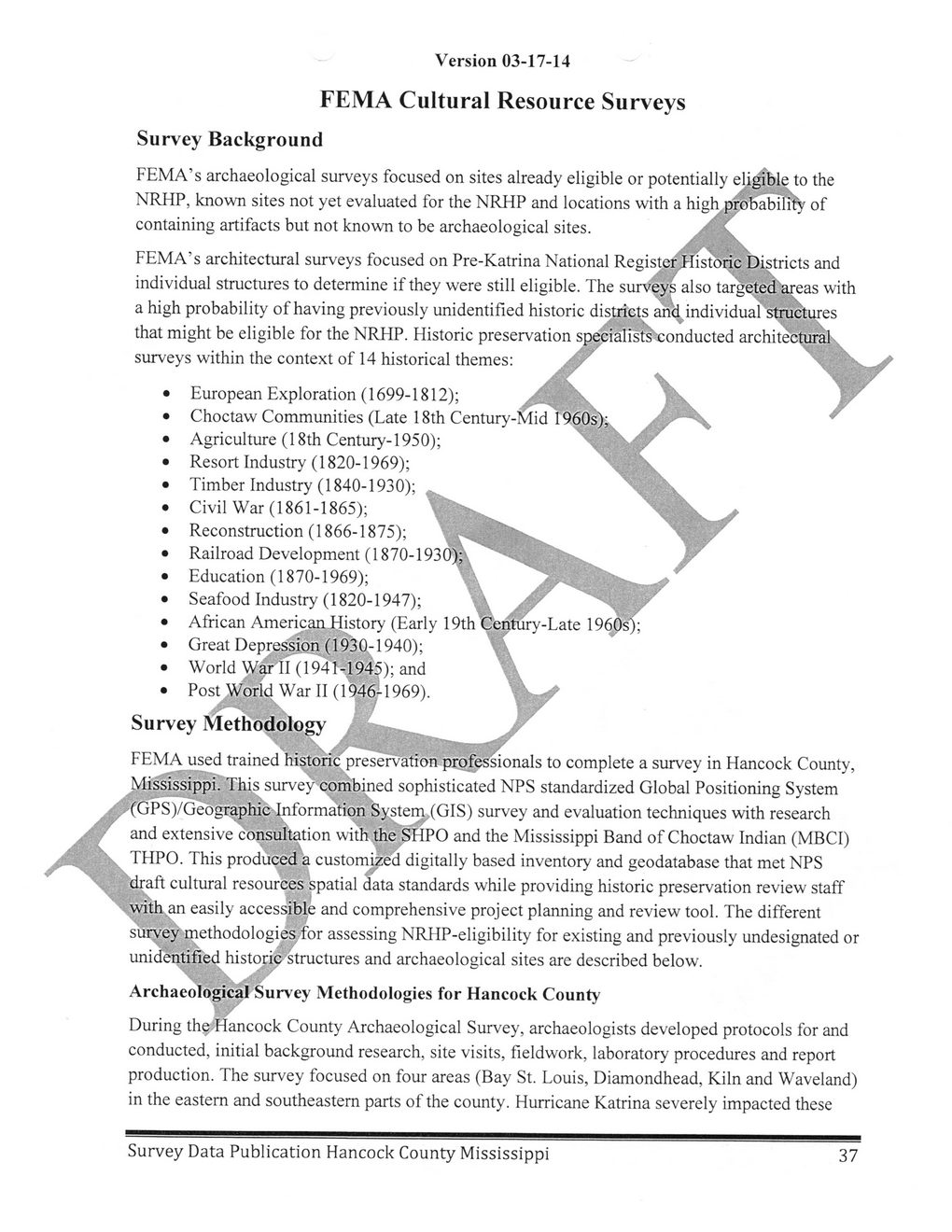This text was obtained via automated optical character recognition.
It has not been edited and may therefore contain several errors.
Version 03-17-14 FEMA Cultural Resource Surveys Survey Background FEMA’s archaeological surveys focused on sites already eligible or potentially eligible to the NRHP, known sites not yet evaluated for the NRHP and locations with a high^probability of containing artifacts but not known to be archaeological sites. FEMA’s architectural surveys focused on Pre-Katrina National RegisterJrlistoric Districts and ' / X' individual structures to determine if they were still eligible. The surveys also targetecf'areas with a high probability of having previously unidentified historic districts and individual structures that might be eligible for the NRHP. Historic preservation specMisfcheonducted architectural, surveys within the context of 14 historical themes: // European Exploration (1699-1812); / Choctaw Communities (Late 18th Century-Mid Agriculture (18th Century-1950); Resort Industry (1820-1969); Timber Industry (1840-1930); .... Civil War (1861-1865); Reconstruction (1866-1875); Railroad Development (1870-1930);' Education (1870-1969); \ Seafood Industry (1820-1947); \ ,/./ s. y / / African American Flistory (Early 19th Century-Late 1960s); Great Depression (1930-1940); \\ World War'll (1941-1945); and Post World War II (1946-1969). Survey Methodology FEMA used trained historic preservation professionals to complete a survey in Hancock County, Mississippi. This survey combined sophisticated NPS standardized Global Positioning System (GPS)/Geographic Information System (GIS) survey and evaluation techniques with research and extensive consultation with the SHPO and the Mississippi Band of Choctaw Indian (MBCI) THPO. This produced a customized digitally based inventory and geodatabase that met NPS draft cultural resources spatial data standards while providing historic preservation review staff ! with an easily accessible and comprehensive project planning and review tool. The different survey methodologies for assessing NRHP-eligibility for existing and previously undesignated or unidentified historic structures and archaeological sites are described below. Archaeological Survey Methodologies for Hancock County During the Hancock County Archaeological Survey, archaeologists developed protocols for and conducted, initial background research, site visits, fieldwork, laboratory procedures and report production. The survey focused on four areas (Bay St. Louis, Diamondhead, Kiln and Waveland) in the eastern and southeastern parts of the county. Hurricane Katrina severely impacted these Survey Data Publication Hancock County Mississippi 37

Hancock County History and Archeology Survey-Publication-Data-2014-(38)